Environmental Stewardship
Leading the Way in Organics
California strawberry farmers grow more organic berries than anywhere else in the world, including the other forty-nine states combined. In fact, one in four strawberry farmers in California grow both conventional and organic berries.
But it’s not just organic farmers using these practices. Conventional growers also include some organic farming methods into their operations. Some of these techniques include:
-
- Hand weeding reduces chemical herbicide use.
- Mechanical bug vacuums suck up harmful insects and reduce pesticide use.
- Beneficial insects released in the field are often the first line of defense.
- Fish emulsion sometimes replaces the use of chemical fertilizers.
Pioneers in Water Conservation
Strawberry farmers are leaders in resource conservation, such as water use, as early adopters of drip irrigation.
- Drip irrigation actually “drips” directly over the root ball instead of spraying water into the air. Much of the water from sprinklers evaporates before hitting the ground. Water drops also land in a larger pattern on leaves and dirt in the alleys between rows where the precious resource evaporates before it can nourish the crop. Plastic mulch is placed over the beds which prevents direct evaporation from the soil. The blanket also absorbs the sun’s energy which warms the top layers of soil and keeps pests under control. The insulated soil stays warm at night which enables young plants to establish quickly.
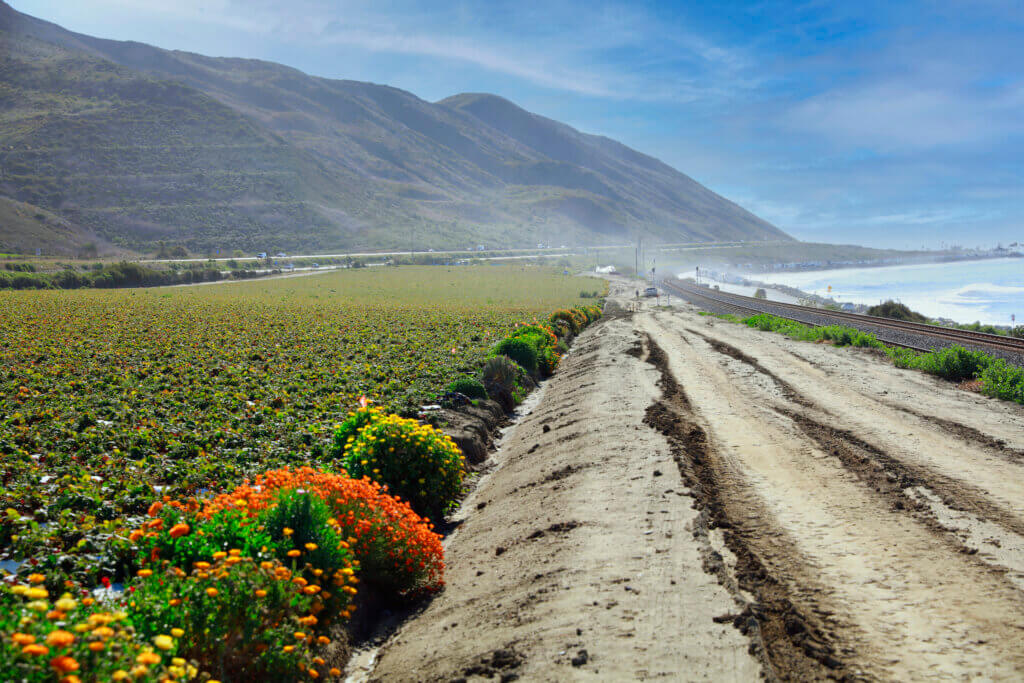
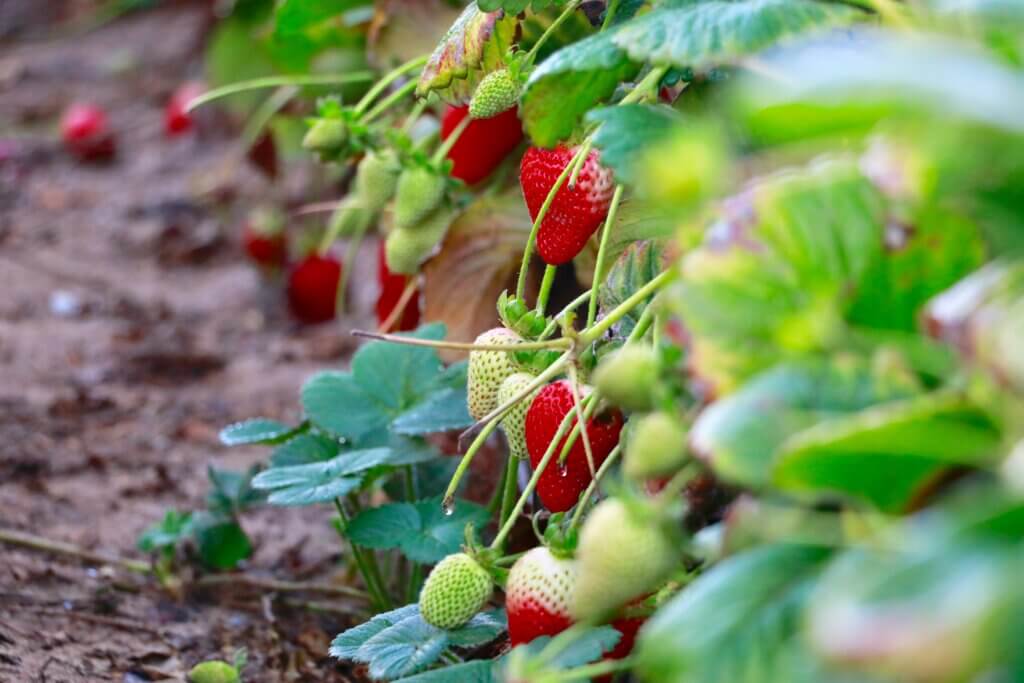
One acre of strawberries requires less water than an acre of homes in Los Angeles.
Investing in Innovation
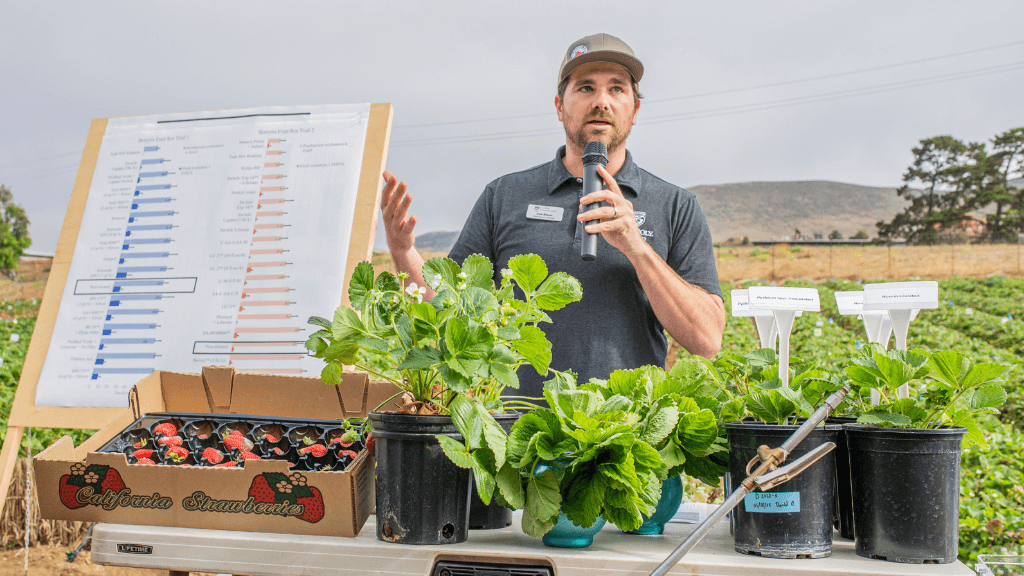
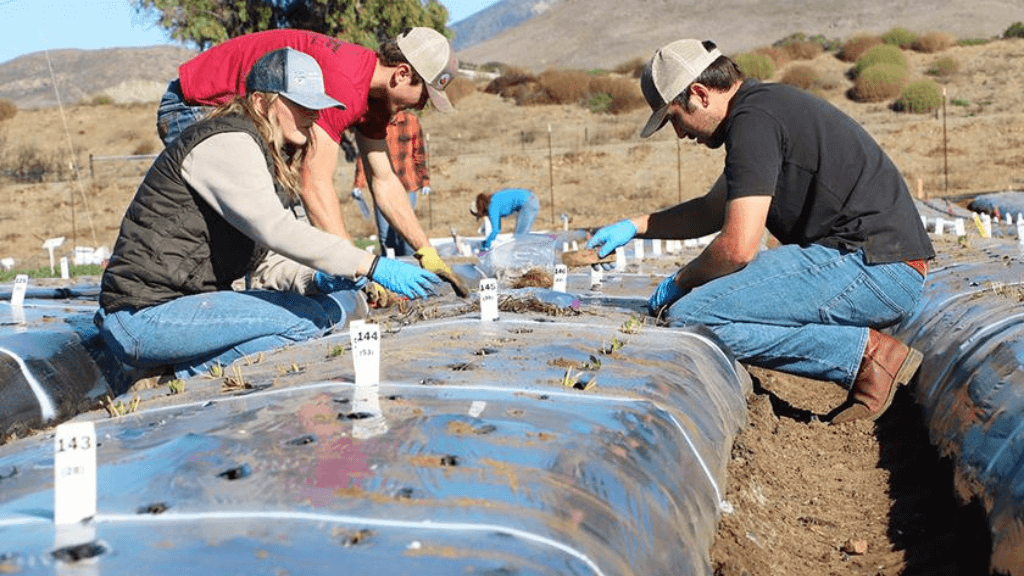
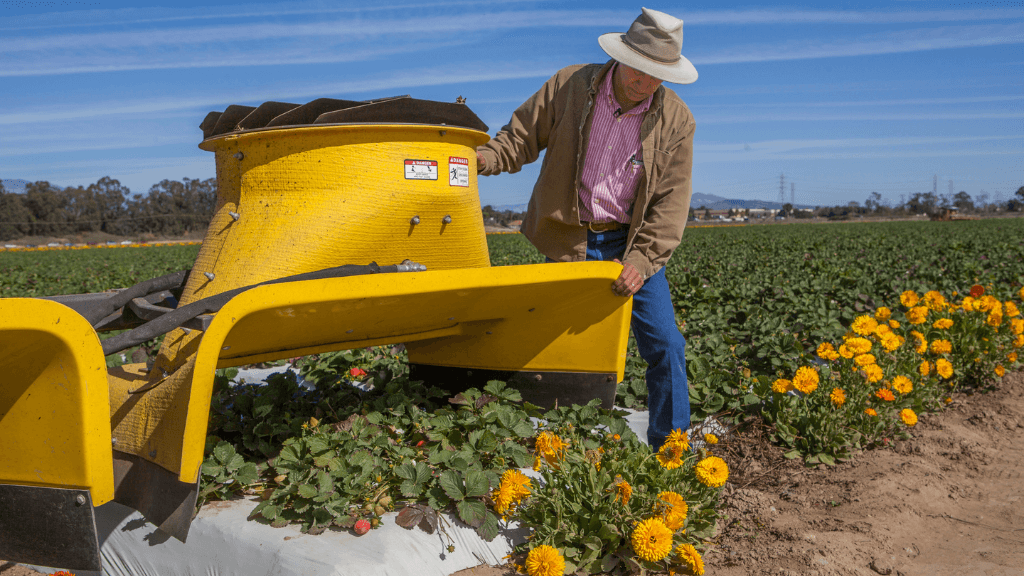
The California Strawberry Commission continues to provide millions of dollars for crop research, always striving for better, more sustainable farming. California strawberry farmers lead the world in environmental research dedicated to reducing pesticide use.
2023 marks the 10th anniversary of the Strawberry Center, a partnership between the California Strawberry Commission and Cal Poly. Initially focused on soilborne pathogens and soil fumigation alternatives, the Center continues to increase the sustainability of the California strawberry industry through research and education that addresses industry needs.
In 2022, the California Department of Pesticide Regulation awarded Dr. John Lin, the Strawberry Center’s Automation program director, a grant aimed at promoting the understanding and adoption of UV-C light technology by California’s strawberry growers.
TERMS AND CONDITIONS • PRIVACY • CONTACT • SCHOLARSHIP PROGRAM • INDUSTRY & TRADE • INDUSTRY NEWS • EN ESPAÑOL • Powered by Team of Horses • ©2010-2024 California Strawberry Commission. All Rights Reserved.
